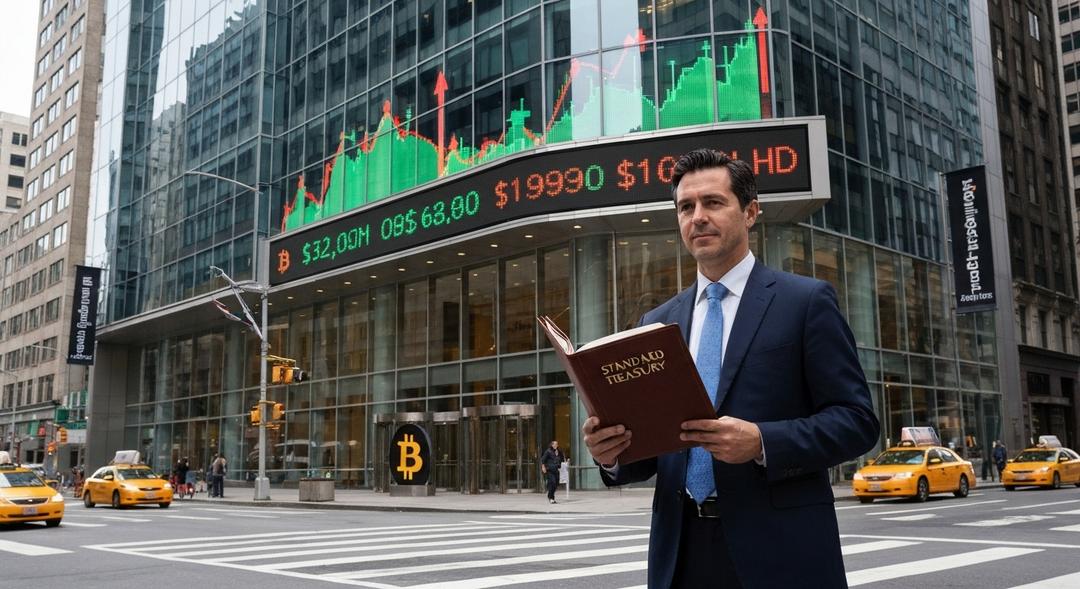Adam Back drives a new wave in Bitcoin corporate treasury initiatives.
His company, Bitcoin Standard Treasury Co., or BSTR, is on track to become a dominant force in BTC holdings.
Back, a celebrated cryptography expert, is spearheading BSTR as it navigates a planned public debut through a merger with Cantor Equity Partners. The company already claims over 30,000 bitcoin in reserves, with ambitions to push that number past 50,000. This rapid growth brings it close to surpassing MARA Holdings, which currently stands as one of the largest corporate bitcoin holders after Strategy.
Together, MSTR, MARA, and BSTR now manage more than 700,000 bitcoin, a figure that reflects more than three percent of the currency’s total fixed supply. This concentrated ownership highlights a new era of competition among public companies for crypto leadership.
Innovative Moves in Corporate Bitcoin Strategy
BSTR is not content with simply holding bitcoin on its balance sheet. Instead, the firm uses a combination of financial strategies, such as selling put contracts to acquire bitcoin at better prices and leveraging bitcoin-backed credit lines.
They secure digital assets with tri-party custodians that are fully regulated, adding multiple layers of trust and protection for shareholders. This approach keeps the company clear of risky decentralized finance maneuvers, focusing on transparency and robust fiduciary duty instead.
Back emphasizes that the heart of their mission is to maximize both liquidity and security. Their public listing deal introduces the first instance of Bitcoin-denominated private equity placement on Wall Street. In practice, the company’s founders pledged 25,000 BTC, while another 5,021 BTC was sourced directly from the broader bitcoin community. The offering was paired with a landmark $1.5 billion in fiat funding, combining different market worlds under one roof.
This financial structure splits the capital raise into common stock, convertible notes with premium terms, and preferred equity targeting consistent dividends. The trust involved could inject an additional $200 million if conditions are favorable.
The leadership at BSTR believes that this dual-asset approach gives them unique leverage. By gathering large amounts of both fiat and digital currency at inception, the company is positioned to accelerate bitcoin’s practical adoption and ownership across new segments.
Pioneering New Models for Digital Asset Investment
What makes BSTR’s plan particularly unique is its in-kind PIPE structure. Investors have the opportunity to contribute bitcoin directly, capturing potential market upsides before final settlement. This innovation attracts both longstanding cryptocurrency participants and traditional finance managers eager for straightforward bitcoin access.
Chief Investment Officer Sean Bill, who brings a history of institutional bitcoin investment, sees the company becoming the Berkshire Hathaway of the digital currency world. The treasury is designed to be dynamic, focused not only on traditional buy-and-hold but also on active yield and strategic acquisitions within the wider bitcoin sector.
Sean Bill describes their approach as a reversal of previous Wall Street trends. Instead of seeking fiat investment to purchase digital assets, BSTR arrives on Wall Street with a substantial bitcoin commitment. Their in-kind equity placement is the first of its kind in the United States, signaling that bitcoin itself is now driving corporate financial engines in a way not previously seen.
This direct bitcoin mechanism demonstrates the maturing connection between digital currency enthusiasts and formal capital markets. The initiative also establishes a potential path for other companies thinking about ways to merge sound money principles with investment-grade products.
The company’s leadership is convinced that by bridging traders and bitcoin holders with Wall Street, they are leveraging US market liquidity and creating new standards for bitcoin-denominated convertible instruments. These instruments already show positive results in overseas markets, and BSTR believes the American financial marketplace could multiply these gains.
The anticipated closing of their deal in the fourth quarter would see the company begin trading under the ticker BSTR. If all targeted funds are subscribed, this launch could set a new benchmark for scale in corporate bitcoin treasuries. It may shape future strategies for those aiming to join the next evolution of digital finance.
Investors interested in exposure to these modern models are increasingly looking for frictionless ways to Start Cloud Mining, potentially complementing traditional purchasing and treasury tactics.
Conclusion
BSTR’s ambitious treasury campaign reflects how far digital currencies have come from experimental beginnings. Their moves represent not just technical innovation but also a signal that structured, large-scale bitcoin finance is entering the mainstream.
With the backing of seasoned leaders and the adoption of creative investment vehicles, BSTR could redefine how digital assets are integrated with public capital markets. The company’s growth and its upcoming public launch create a compelling story for institutional and private investors alike, pointing toward a new frontier in financial management and real world bitcoin adoption.

Ewan’s fascination with cryptocurrency started through his curiosity about innovative technologies reshaping the financial world. Over the past four years, he has specialized in cloud mining and crypto asset management, diving deep into mining contracts, profitability analysis, and emerging trends. Ewan is dedicated to helping readers understand the technical and economic aspects of crypto mining, making complex information accessible and actionable.




